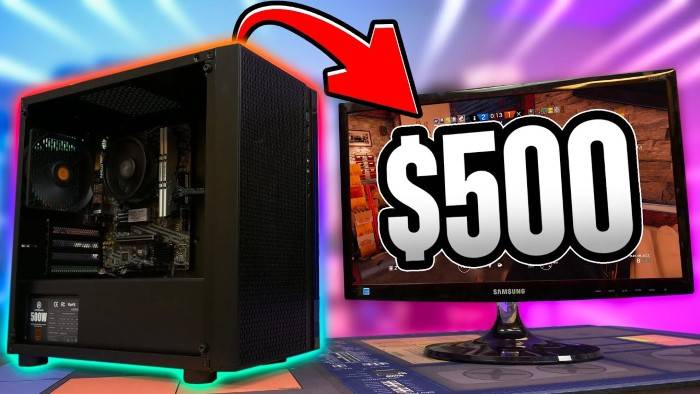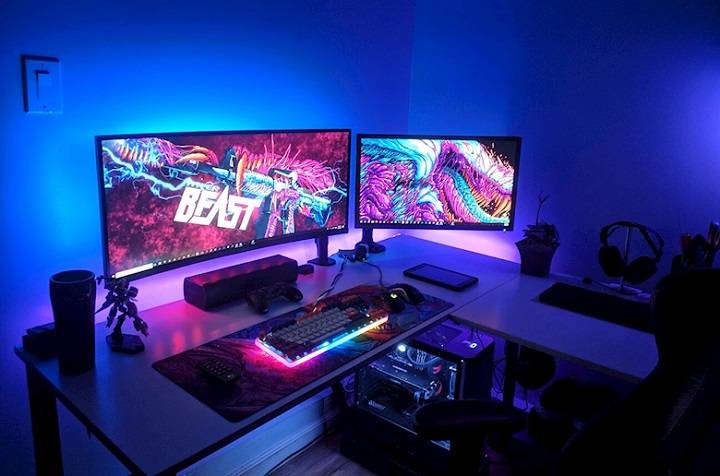In the world of gaming, having a powerful PC can make all the difference. However, not everyone has the budget to splurge on top-of-the-line hardware. The good news is that you can still enjoy a great gaming experience without breaking the bank. In this guide, we’ll explore how to build the ultimate gaming PC for under $500. From selecting the right components to optimizing performance, we’ve got you covered.
Why Build a Gaming PC Under $500?

- Cost-effectiveness: Building a gaming PC under $500 allows you to enjoy gaming without emptying your wallet.
- Customization: By building your own PC, you have the flexibility to choose components that meet your specific needs and preferences.
- Learning experience: Building a PC can be a fun and educational experience, helping you gain a deeper understanding of how computers work.
Choosing the Right Components
Processor (CPU):
- Look for a budget-friendly CPU with decent performance, such as the AMD Ryzen 3 or Intel Core i3 series.
- Consider factors like clock speed, number of cores, and compatibility with other components.
Graphics Card (GPU):
- Opt for a mid-range GPU that offers good performance for gaming, such as the Nvidia GeForce GTX 1650 or AMD Radeon RX 570.
- Check for compatibility with your CPU and motherboard, and consider factors like VRAM and clock speed.
Motherboard:
- Choose a motherboard that supports your chosen CPU and GPU, and offers features like sufficient RAM slots and expansion ports.
- Look for a reputable brand with good reviews and reliable customer support.
Memory (RAM):
- Aim for at least 8GB of DDR4 RAM, preferably in dual-channel configuration for improved performance.
- Consider the speed and latency of the RAM modules, as well as compatibility with your motherboard.
Storage:
- Invest in a solid-state drive (SSD) for faster boot times and game loading speeds.
- Consider pairing it with a larger capacity hard disk drive (HDD) for additional storage space at a lower cost per gigabyte.
Power Supply Unit (PSU):
- Choose a PSU with sufficient wattage to power your components comfortably, with some headroom for future upgrades.
- Look for a reliable brand with good efficiency ratings and adequate safety features.
Case:
- Select a case that offers good airflow and cable management options, with enough space to accommodate your components.
- Consider factors like aesthetics, build quality, and ease of installation.
Building Your PC

Preparation:
- Gather all your components and necessary tools, such as screwdrivers and anti-static wrist straps.
- Clear a well-lit and static-free workspace, and refer to the manuals for your components for guidance.
Assembly:
- Start by installing the CPU and CPU cooler onto the motherboard, following the manufacturer’s instructions.
- Install the RAM modules, graphics card, storage drives, and any other expansion cards onto the motherboard as needed.
- Carefully mount the motherboard into the case, connecting all necessary cables and ensuring good cable management.
- Install the power supply unit, connect it to the motherboard and components, and tidy up any excess cables.
Testing and Troubleshooting:
- Power on your PC and check for any signs of life, such as fans spinning and LEDs lighting up.
- Enter the BIOS/UEFI setup to confirm that all components are detected and configured correctly.
- Install your operating system and drivers, and run stress tests and benchmarks to ensure stability and performance.
Optimizing Performance
Overclocking:
- If your components support it, consider overclocking your CPU and GPU for extra performance.
- Take precautions to ensure adequate cooling and stability, and gradually increase clock speeds while monitoring temperatures and stability.
Software Optimization:
- Keep your operating system, drivers, and game clients up to date to ensure compatibility and security.
- Consider using performance optimization tools and utilities to tweak settings and improve system responsiveness.
Upgrades and Expansion:
- As your budget allows, consider upgrading individual components such as the CPU, GPU, or RAM for better performance.
- Explore options for adding additional storage, upgrading to a higher resolution monitor, or enhancing your gaming experience with peripherals like gaming mice and keyboards.
Building a gaming PC under $500 is not only achievable but can also be a rewarding experience. By carefully selecting the right components, assembling them with care, and optimizing performance, you can enjoy a fantastic gaming experience without breaking the bank. Whether you’re a budget-conscious gamer or a DIY enthusiast, building your own PC is a great way to tailor your gaming setup to your exact specifications. So roll up your sleeves, unleash your creativity, and embark on the journey of building your ultimate gaming PC under $500.


